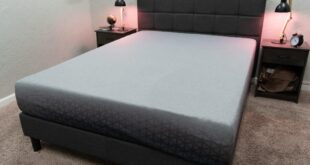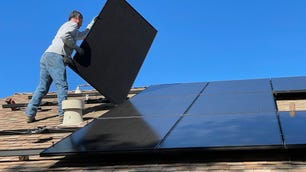I’ve been writing about home battery systems for more than a year, but these big devices are hard to test hands-on. For one, they’re far bigger and more expensive than, say, a phone. And you have to install them into your home’s electrical system — not easy when you live in an apartment.
Fortunately, CNET has a testing lab that allows us to get more hands-on experience with these big batteries. At our Louisville, Kentucky lab facility, we currently have two home battery systems set up for testing: The Bluetti EP900 (our current pick for the best solar battery) and the Savant Power Storage 20.
After finally getting a look at these systems beyond just the spec sheets and paperwork they come with, I realized there’s a lot more going on with these systems than meets the eye. Here are just a few things I discovered while playing around with these home battery systems.
The switchover to backup power happens almost instantaneously
The biggest draw to purchasing a home battery system is being able to keep your home powered during an outage. But I always wondered exactly how that works. Power outages happen unexpectedly, and you don’t want to be sitting there in the dark for too long. Thankfully, the switchover to backup mode happens almost instantaneously.
It’s so quick you might not even notice the power went out at all, as it all goes down in a matter of milliseconds. Every battery should come with a rated switchover time on its spec sheet, usually in the 20 – 25 millisecond range. To get a feel for just how quickly the switchover happens, we put two batteries, the Savant Power Storage 20 and the Bluetti EP900, through a simulated power outage. The Power Storage 20 has a rated switchover time of less than 70 ms and the EP900 boasts a rated switchover time of less than 10 ms. You might not think there’s that big of a difference in just a few milliseconds, but I felt like there was a noticeable difference.
The Bluetti EP900 definitely switched over faster, but the Power Storage 20 wasn’t too far behind. Neither were uninterruptible, though. The compressor in the portable AC unit we had running shut off during both tests. So it was technically without power for a fraction of a second. If you were playing a game on your PC or console of choice, you would’ve lost all your unsaved progress.
Some batteries can keep themselves warm in colder climates
Most home battery features are pretty standard — you’ve got your various operating modes, energy data and savings tracking and options to help you manage expensive time of use rates from your utility. But the Bluettii EP900 comes with a cool feature that surprised me.
Buried within the app settings is an option to toggle “battery heating” on or off. This is essentially a self-heating function for your batteries. When battery heating is on, the system will pull power from the grid to help warm up the batteries if the current operating temperature drops below a certain temperature.
Normally, home batteries have the opposite problem — they get so hot that they need internal fans or a cooling system so things don’t overheat. But batteries don’t perform very well when they get super cold either, so having a self-heating function is nice if you live in a colder climate and plan to install your home battery outside. And while I’m sure other lithium-ion batteries have this functionality, it’s not something that ever makes it into the marketing material for these systems.
Modular batteries are monitored a bit differently
It’s always great to see more manufacturers adopting modular battery designs for their home battery systems. Instead of one large lithium-ion battery, modular systems are made up of several smaller battery modules that are connected together. They are kind of like Legos — you can start small and add more blocks as needed. It’s also much cheaper to start with a small module or two versus buying a giant battery right out of the gate.
Modular batteries are monitored a bit differently too, with the status of each individual module being monitored separately. This can make diagnosing any issues a lot easier. If something goes wrong with an individual module, you’ll know exactly which one it is. And the best part is the rest of the battery system will continue to operate like normal. Plus, replacing a small module is a lot easier than replacing the entire battery system. Non-modular systems tend to shut down completely when they detect problems with the battery.
The individual status of each module isn’t always reflected in the app, though. Both the systems we tested were modular systems, and both apps only displayed the complete state of charge for the entire system. It’s not a big deal, but if you’re really curious about how your modules are doing, you can usually find some sort of LED lights along the sides of your system. Both the Power Storage 20 and the EP900 systems use LED lights to communicate the status of the battery modules. Each module should have its own light. Green means everything is all good. Any other color likely means a module needs to be charged or there’s something wrong. I imagine the app would also alert you if your system detects any issues.
The little green lights indicate the status of each individual module.
Your battery inverter is secretly an energy vampire
Just because your appliances and electronics are turned off doesn’t mean they aren’t still using power. These are what’s called energy vampires, and they’re all over your home, lurking in nearly every outlet. And just like the rest of the electronics in your home, your home battery system is also sucking in electricity, even when it’s not doing anything.
It’s actually all the inverter’s fault. Your system’s inverter is almost like the equivalent of a human brain. Its most important job is to convert the stored DC electricity in the battery into AC electricity that your home can use. It also typically houses the system’s communication functions, data collection and is in charge of detecting grid outages. So yeah, that big box sitting on your wall is doing a lot. Much like how humans can’t function without the brain, your home battery system can’t function without the inverter.
And because the inverter is doing so much, it requires a bit more juice to run off of. The inverter is always drawing power, even in standby mode. The bigger the inverter, the more power it needs.
The Savant Power Storage 20 has a giant 12.5 kW inverter.
Home batteries are extremely quiet
If you’re worried about the noise level of home batteries, don’t be. These systems aren’t loud (or stinky) like many gas-powered generators. Your home battery is so quiet you’ll probably forget it even exists. Both systems we tested were extremely quiet. In fact, the only times we noticed any sound at all was when we were running heavier loads or when the systems were pulling a large amount of power from the grid while charging.
If the inverter is experiencing heavier demand, its internal fans will turn on to help cool things down. The fans are the only noisy element to these systems, and I wouldn’t even consider it “noisy.” It’s more like a light whirring sound. You really shouldn’t be able to hear it from inside your home. It’s much, much quieter than a generator.
 synnbiob
synnbiob

